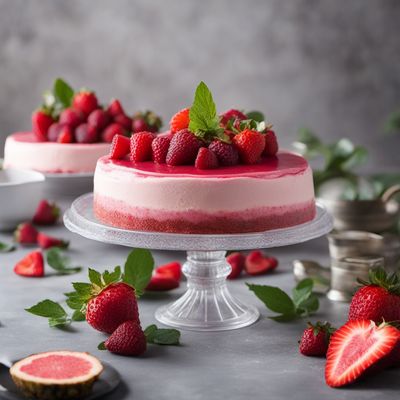
Ingredient
Hibiscus infusion flowers and similar-
The Vibrant Elixir: Exploring the World of Hibiscus Infusion
Hibiscus infusion flowers are known for their striking appearance, with vibrant red, pink, or purple petals that unfurl when steeped in hot water. They possess a tangy, slightly floral flavor that is often compared to cranberries or sour cherries. The infusion has a deep red hue and a refreshing, slightly tart taste. The flowers are dried and can be used whole or crushed to make teas, syrups, cocktails, and even incorporated into baked goods or savory dishes for a unique twist.
Origins and history
Hibiscus infusion flowers have a rich history that spans across cultures and continents. Native to tropical regions, including Africa, Asia, and the Caribbean, hibiscus flowers have been used for centuries in traditional medicine and culinary practices. They hold cultural significance in many countries, such as Mexico, where hibiscus tea, known as "agua de jamaica," is a popular beverage. The flowers have also been used in Ayurvedic medicine for their potential health benefits.
Nutritional information
Hibiscus infusion flowers are a rich source of antioxidants, vitamin C, and minerals such as iron and calcium. They are low in calories and contain no fat or cholesterol.
Allergens
There are no known allergens associated with hibiscus infusion flowers.
How to select
When selecting hibiscus infusion flowers, look for petals that are vibrant in color and free from any signs of mold or moisture. Avoid flowers that appear dull or have a musty smell.
Storage recommendations
To maintain the freshness of hibiscus infusion flowers, store them in an airtight container in a cool, dark place. Avoid exposure to moisture or direct sunlight, as this can degrade the quality of the flowers.
How to produce
Amateur gardeners can grow hibiscus plants in containers or gardens with well-draining soil and ample sunlight. Regular watering and pruning will help promote healthy growth and flower production.
Preparation tips
To make a hibiscus infusion, steep the dried flowers in hot water for 5-10 minutes, depending on desired strength. Adjust the amount of flowers based on personal preference. The infusion can be enjoyed hot or cold and can be sweetened with honey or other natural sweeteners. Hibiscus infusion can also be used as a base for cocktails, added to fruit salads, or incorporated into marinades for a tangy twist.
Substitutions
If hibiscus infusion flowers are not available, cranberries or pomegranate juice can be used as substitutes to achieve a similar tart flavor and vibrant color.
Culinary uses
Hibiscus infusion flowers are commonly used to make herbal teas, refreshing beverages, and cocktails. They can also be used to infuse syrups, sauces, and dressings, adding a unique tangy flavor and vibrant color to various dishes.
Availability
Hibiscus infusion flowers are commonly available in tropical regions, including Africa, Asia, and the Caribbean. They can also be found in specialty stores or online.

